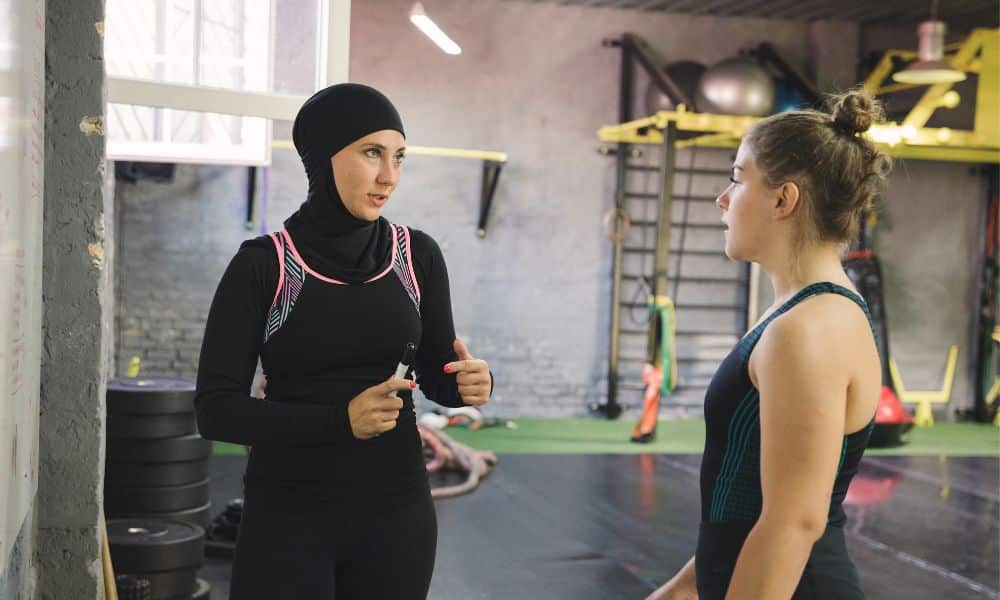The best workout helps you to reach a fitness goal fast. It forces the body to adapt by getting stronger, faster, or more flexible. Selecting the proper training to reach a fitness goal guarantees success. This article will discuss making a goal that allows you to choose the best workout.
The problem with many workouts is that they do not match the fitness goal of a trainee.
The training may seem fit but does not use the correct exercises or progressive overload. Sometimes the goal is too vague to determine the best workout. For example, wanting to build big muscles is a vague goal. This type of plan makes it difficult to decide on the best training. The best workout provides you with the perfect task to complete the goal.
The process‐ and outcome‐focused programs produced similar subjective experiences. Still, the process‐focused program was associated with more excellent workout attendance, more adoption of supplemental weight‐loss strategies, and higher completion of the program requirements. Here is a list of fitness enthusiasts’ top fitness goals according to the IDEA Personal Trainer Journal:
- Body Shaping 82%
- Weight Management 77%
- Muscular Strength 72%
- Improve Health 72%
- Exercise Adherence 72%
- Improve Lifestyle by 56%
- Diet Improvements of 55%
- Improve Self-Image by 52%
- Aerobic Improvement 51%
- Psychological Health 36%
- Meet Social Needs 23%
How do you design a superior fitness goal?
To design a superior fitness goal, you must start vaguely and add some specifics. For example, you want to build big muscles. Now answer these questions: where, when, and how. Where is the body located? When is the time you hope to meet the goal? How is the workout program? A superior fitness goal is not Superman. It can help you on your fitness journey but can not solve all your problems. Sometimes you will need two or three goals. But don’t overdo it. You don’t want so many plans until they seem like a task.
SMART goals for your fitness goals. A SMART goal is specific, measurable, relevant, and time-specific. So, what does a SMART plan look like? For example, increase chest size by 1 inch in 30 days. This goal checks all the boxes. Do not forget the goal does not have to be Superman. It does not have to solve all your problems. But it needs to have an endgame. In 30 days, we will know if we succeeded or failed to complete this goal.
What is the best workout to achieve a fitness goal?
With a superior fitness goal, you can select the best workout. Workout programs complete a specific task. For example, high-intensity interval training uses motion to burn stomach fat and tone muscles. German volume training uses volume to build muscle and definition. A 5×5 uses a mixture of volume and weight to build strength and muscle. Pre-exhaustion builds muscles after an injury or over-training from heavy exercise. Post-exhaustion singles out a muscle or muscle group that needs extra work.
All workouts use training principles that guarantee results.
The granddaddy principles have been around before granddaddy. The principles that dictate every workout program are volume and progressive overload. So, let’s revisit our SMART goal of increasing chest size by 1 inch in 30 days. The best workout for this goal would be the Post-exhaustion workout. It singles out a muscle that needs extra work. If you are an advanced trainee, you could use German volume training.
Also, use a diet plan to complement the best workout. Eat protein to build muscle and complex carbs for energy during the training. By combining your diet with the best exercise, you now have two tasks to help you reach your fitness goal. You could always add a sleep or rest plan for more precision. It is best to limit each goal to two or three tasks. Also, follow the KISS principle (Keep It Simple Stupid). The best workout, diet, and sleep plan give you the tools.
What metric should you use with the best workout?
The number of tasks determines the metrics you need. Thus, you will need a metric for every task and goal. You can see how one affects the other by measuring the task and goal. For example, as your workout volume increases, so should your chest size. Also, the amount of protein you eat and your recovery time affect how fast your chest grows.
So, Let’s return to our SMART goal of increasing chest size by 3 inches in 30 days. The first metric is to measure chest size once a week simultaneously. This metric is important because it determines if we succeeded or failed at our goal.
The second metric is to measure volume every two weeks. The workout volume is the reps multiplied by the sets multiplied by the weight. Did you know that volume and progressive overload cause muscle growth? Progressive overload is where you increase the volume of each workout. So as the weight grows, so does your chest.
Other metrics are optional. You could create a diary and schedule for your protein, supplements, and sleep. Proven supplements like creatine, branch-chain amino acids, and glutamine help build muscle.
Don’t be afraid to change your goal to get the best workout.
If you have never failed, it is because you haven’t tried. Failure is a part of learning and growing. Working a muscle to failure is an excellent example of what failure can do. Failure allows you to push the boundaries. It also gives you a chance to reflect. You get to think about how you can do things better. Also, you get to learn about yourself. When you know your strengths and limitations, you define better workouts and goals.
No matter how good the workout or goal is, they must end. It no longer serves the same purpose when you outgrow a training or goal. Also, if you overreach and bit off more than you can chew, you need to pull back. A fitness journey takes the correct steps to get to the finish line. You can use progressive overload to take the proper steps when you have a well-defined goal.
Finally, always visualize the big picture. What is your end game? Each goal you set should be a gig seen within the big picture. For example, if you want to lift 450 pounds, set smaller goals to get you there. Using 30-day goals helps you to reach 1-year goals. Also, 1-year goals allow you to reach 5-year goals. Using short-term and long-term goals to create and complete a fitness journey would be best. Over time, you will find that the best workout will change to help you on your fitness journey.
If you or someone you know is considering weight loss, share this article on Facebook or Twitter so that others can learn more about losing weight.




